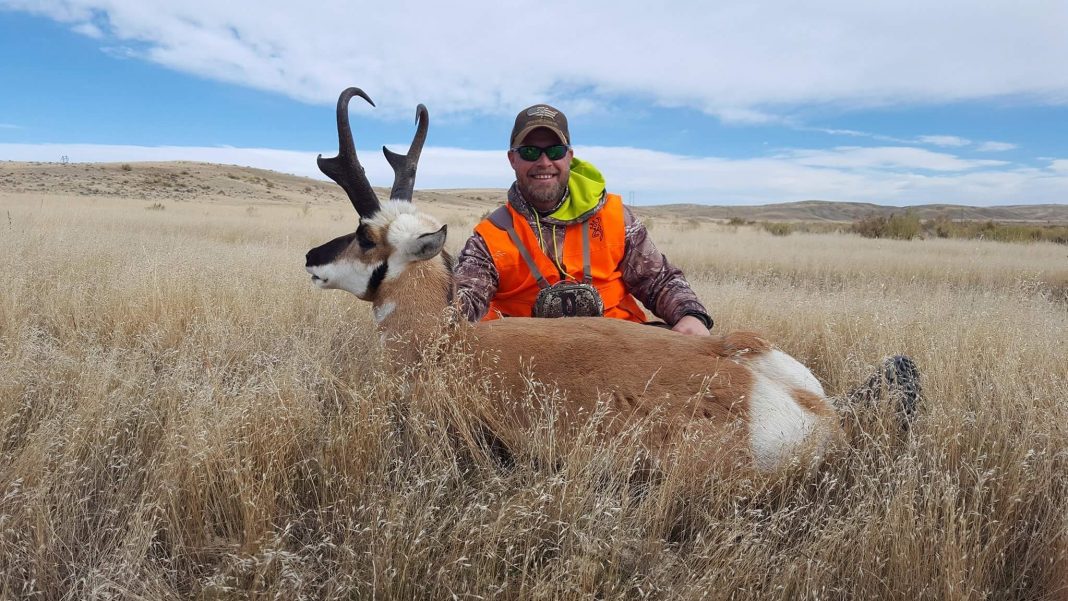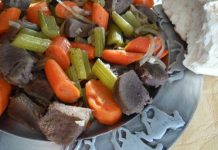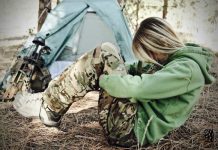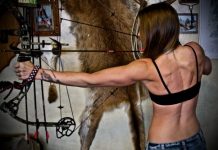HOW TO PROPERLY CARE FOR MEAT AFTER THE KILL – It’s often been said, “if you don’t like the weather in Wyoming, hang on, it will be changing soon.” There are few places in the world you can experience all four seasons in a single day, and as an outdoorsman, you have to be prepared for all elements.
Such was the case on this particular hunt. The cool temps of early week, and punishing rains and thunder storms midway through had succumbed to the blistering heat. I felt the sun beating on my neck, but I knew it a discomfort I would have to endure.
It was late August in Central Wyoming, and it was antelope archery season. My focus was entirely on the buck I was after; few other things mattered. Pre-rut activity was in full swing – bucks were aggressive, chasing and curious.
My buddy, “Lefty” – a Montana Decoy silhouette of an immature buck antelope – and I had drawn the attention of a quality mid-seventies buck. Adrenaline made the heat bearable – it was now hour three watching and patiently trying for a set up to harvest this buck.
Without question, the headgear is a motivating factor in any and all hunts I am a part of. However, we are unquestionable meat eaters. If our family has to consume beef at any time during the year – we have failed during the hunting season. Because of that, the handling and care of the meat is of the upmost importance.
Proper care of game meat starts long before the hunt. Ensuring you have the proper equipment to effectively field dress, quarter, skin, etc. Basically, whatever the occasion, terrain or weather requires.
By now, the buck I was after had lost interest in me and “Lefty”. He had gathered his harem of does and was headed to a large cut in the terrain. As I waited the group out, I made a mental note of the items I had in my pack. This was going to be a long stalk – meaning a long haul back to the truck. The heat would make proper care a challenge.
I always keep adequate knives and a quality saw in my pack. Additionally, I have two-gallon Ziplock freezer bags and two US Army issued wet weather bags (excellent for packing meat, and available on-line at Army Surplus stores). On this day, if I was successful, I decided the best strategy would be boning out this buck.
The last bit of white hind flesh disappeared into the cut, and it was my time to make the stalk. Knowing the area well – I knew there was plenty of cover and rocks that could aid me in getting close enough for a shot with my trusty Hoyt Carbon Element.
I’ve never been one to believe in luck. Choosing, instead, to go by the infamous words of Roman philosopher, Seneca, who said, “luck is when preparation meets opportunity.” I was presented with the opportunity, the preparation of scouting the area and knowing the terrain well in advance had my confidence level high.
As I closed the gap to the cut in the land that held the buck I had my sites on, I dropped my pack and moved in low, using the cover to my advantage. The scene could not have been more ideal. With the wind blowing in my face I was able to get closer to the group. By now, the herd had bedded for the day – and to my advantage – the majority of the herd (including the buck) had their backs to me.
Of course, in any herd, there’s always that one bothersome doe that destroys any best planned stalk if you can’t identify her. Having spotted her, I was able to remain concealed as I pushed on towards the buck. Antelope are exceptional animals at picking up movement. Slow and steady was the motto.
After a couple pauses to range the buck with my Vortex rangefinder, I finally found myself within range. 35 yards, the buck was broadside, but bedded. The next challenge was upon me. Do I wait him out until he stands, risking a shift in the wind (which happens often in Wyoming), or do I give him that iconic Pronghorn snort/blow hoping he will stand long enough?
I knocked an arrow, slowly stood, and took the chance. Immediately after hearing my best attempt at imitating a rival suitor, the buck stood – turning gracefully 180 degrees giving me a perfect broad side shot. Without hesitation I let the arrow fly, hitting the buck just behind the front shoulder. He would run about 50 yards before taking his last step.
After taking a few pictures, followed by filling out my tag, and a temporary pause to reflect on the moment – it was time to get to work.
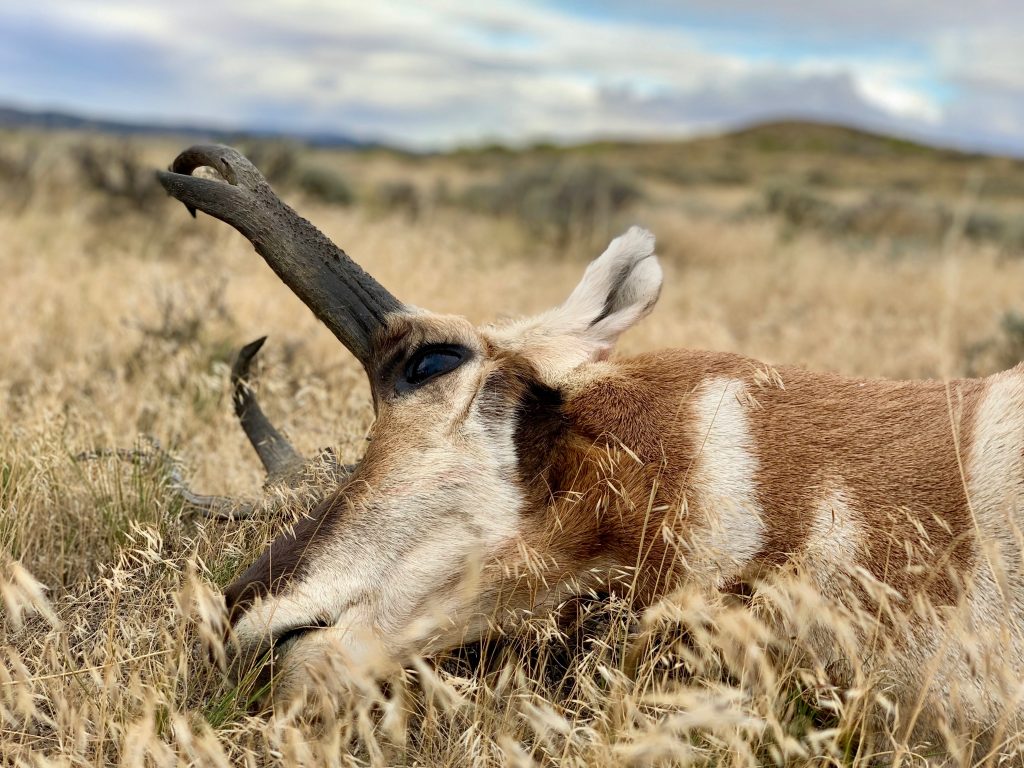
Animals that I can take out whole and that I don’t intend to take to the taxidermist, I like to make an incision from the animal’s anus to his chin. From there, a saw helps me get through the pelvis and rib cage. I will then cut the esophagus loose – make an incision in the esophagus for my finger and pull in a downward motion using my knife to cut lose any hang ups. This has always been an effective way to get all innards out without getting too dirty doing the job.
However, on this day – it would require a little more work. One can quarter an animal without actually gutting him, while still retaining back straps and the tasty tenderloins on the inside of the animal just below the rib cage.
First, I’ll roll out a small tarp to put the animal on, so I can remove his hide without getting dirt on the meat. Dirt, heat and moisture are three common things that will lead to the spoilage of game meat.
Once the hide is off, I will cut his front shoulders free. There is no bone that holds the shoulder blade in place. Pulling the front leg away from the body, you can simply cut the shoulders away with a knife. When shoulders are detached, cut all meat from the bone and store it in a Ziplock bag – repeat the process for the second shoulder.
The backstraps are next. Make an incision that runs the length of the backbone (on both sides) to the hind quarters. The next incision is about six inches (on an antelope) away from the backbone. Now, simply filet the back straps from the animal’s body and safely store it.
Antelope hair is easily the most annoying of all ungulates during the field dressing process. It is hollow and easily pulls away from the body of the animal. While dressing your animal, do your best to keep your meat free of hair.
The hind quarters are next. You can simply bone the hind quarters attached – or remove the hinds to bone out. To remove the hind quarters, follow the natural contour of the animal’s pelvis pushing down until the ball and joint are exposed. Cut the ball from its socket – and you can finish the incision to remove the hind quarter.
Finally, it’s time for the sweet meat still inside the animal. Often times referred to as the butcher’s cut. You can access the tenderloins by making an incision at the bottom of the rib cage along the backbone of the animal.
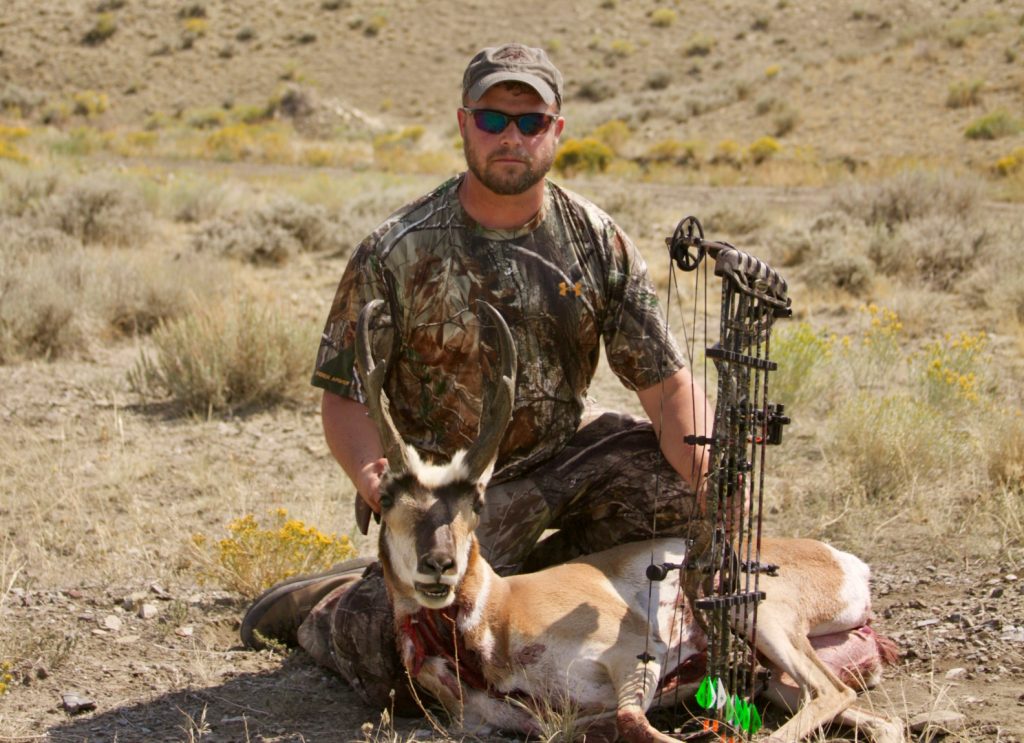
Once all meat is removed, it’s time to take the head of your trophy. This can be done without a saw – simply cut the vertebrae away where it connects to the base of the animal’s skull.
Loaded and packed, the final destination on the day is a cooler equipped with ice to keep your meat cool.
On a side bar – antelope meat is one of the most polarizing of all ungulates. Some have a hard time eating, while others will argue it is the best of them all. Proper care in the field makes all the difference. Most of the time, pronghorns are harvested in extremely hot conditions as was the case on this day for me. The sooner you can get the meat cooled, the better the animal will taste.
And, of course, how you prepare it when you’re ready to grill it. But that is a story for another day.


